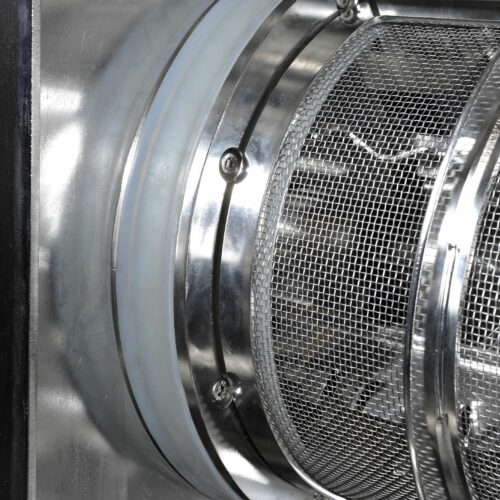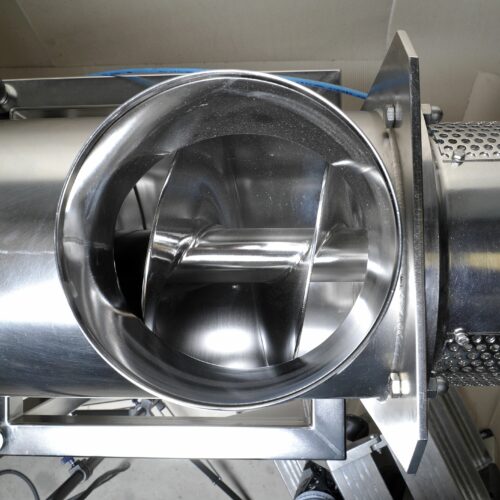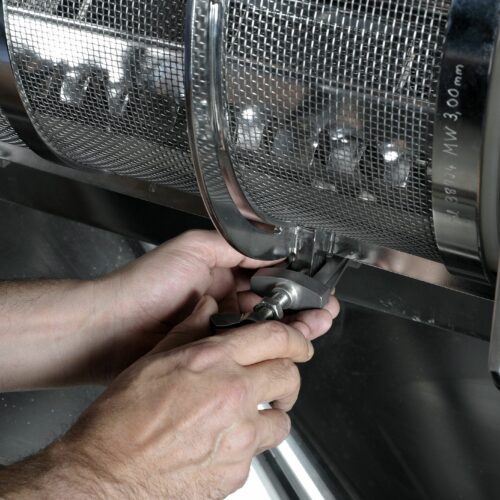A leading company in cocoa processing produces semi-finished products of high quality: natural or deodorised cocoa butter, cocoa masses, cocoa powder and cocoa cake.
To screen out foreign material and break up agglomerates formed during the production process, the customer was looking for two new screening machines. The smearing, sticky consistency of the cocoa and the different properties of the manufactured products make the task challenging.
With very fine mesh sizes, as used in the sieving of cocoa powder, the sieve mesh – depending on the fat content and temperature of the cocoa – sooner or later becomes clogged. The sieve inserts virtually smear. With the screening technology used up to now, this always necessitated costly cleaning work – in addition to the cleaning and disinfection that occurred during product or shift changes.
It is precisely these downtimes for intermediate cleaning that have been reduced to a minimum with the new screening technology from Engelsmann.
When it comes to screening hard-flowing products such as cocoa, centrifugal screening machines such as the JEL Viro are particularly suitable. The screening machine is designed for products with demanding properties that tend to clog the screen mesh. Baking powder, sulphur or phosphate are also screened with it. Agglomerates, which regularly occur in the handling of cocoa, are dissolved by the JEL Viro at the same time or removed from the process as oversize particles.
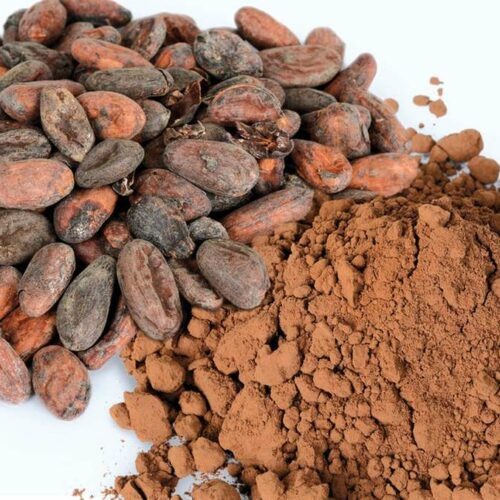
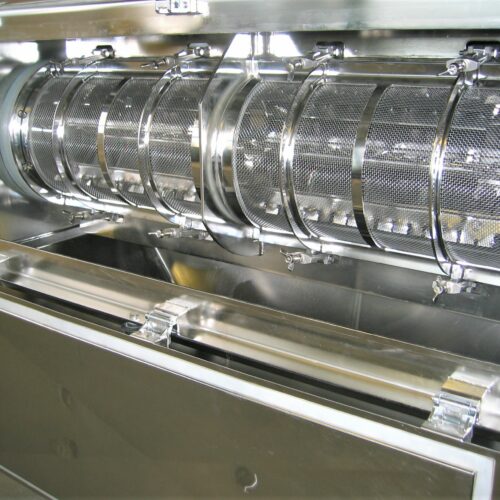
Sieving ground cocoa is tricky. The mass quickly becomes sticky and tends to clump. A vibration motor sets the screen basket into high-frequency vibrations. This prevents the sieve mesh from becoming clogged.
The two JEL Viro for cocoa screening are equipped with vibration cleaning systems that keep the screen mesh permanently free during operation. Two pneumatic vibrators with a speed of over 20,000 rpm cause the vibrating screen basket to vibrate at high frequency. Even greasy cocoa particles are thus released from the sieve mesh and fall back into the product stream.
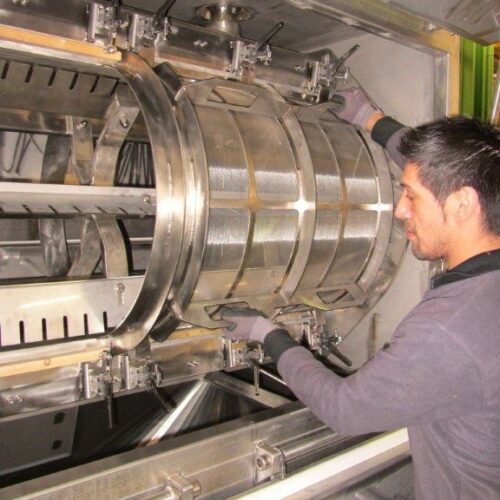
Mesh sizes of 500 my are used to sieve out foreign material and dissolve agglomerates in the cocoa powder.

For the screening of whole cocoa beans, it is possible to convert to coarser mesh sizes if required.
Four tonnes of cocoa powder per hour
In order to achieve the specified sieving capacity, the two JEL Viro were additionally equipped with a discharge device. This prevents material bridges, which quickly occur when handling cocoa. In this way, a smooth material flow is ensured and the targeted throughput is achieved.
Another important factor for minimum downtimes: quick changeover, cleaning or maintenance.Therefore, the product room at the JEL Viro is easily accessible.Its cylindrical sieve basket is made of two half-shells that can be removed individually, which also makes handling uncomplicated and time-saving.
The cocoa is fed in vertically via a distribution chamber and falls into the sieve basket. A shaft with beater bars rotates inside the sieve basket. With its scoop-like ends, this picks up the cocoa powder and conveys it through the sieve machine. In the process, the cocoa is thrown against the fabric of the sieve basket from the inside and cocoa particles of the right grain size can pass through the sieve meshes.
The energy of the impact on the sieve mesh also largely dissolves the agglomerates in the cocoa powder. Any residual agglomerations that have not been broken up, or other components that are not to enter further processing (keyword: protective sieving), are separated. The shaft with the beater bars can be operated at different speeds and the centrifugal screening machine can thus be adapted to cocoa powder with different grain sizes.
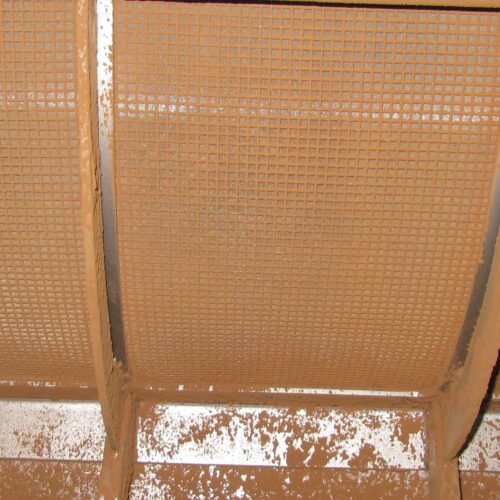
Not only for cocoa: Thanks to its compact design and continuous operation, the JEL Viro is used in various industries.
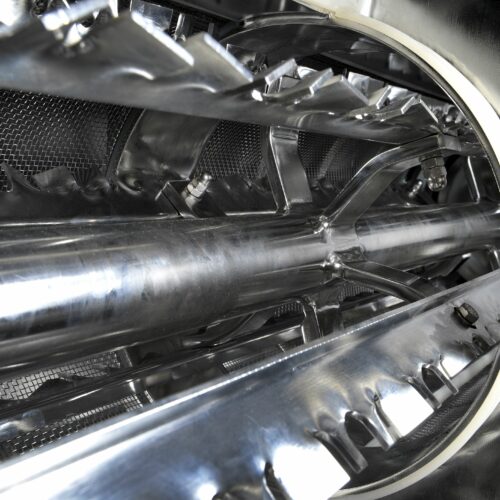
In the GMP-compliant version, it can also be used in the pharmaceutical industry or in the production of cosmetics.
For the cocoa sieving, a discharge device is fitted under the sieve basket. It ensures that the sieved cocoa does not form bridges in the outflow and that the sieving process does not come to a standstill. Two discharge arms made of stainless steel are moved by a slowly rotating shaft and the discharge hopper of the JEL Viro is “forcibly cleared”. In this way, the greasy cocoa mass is completely removed from the machine.
To meet the high hygiene requirements in the food sector, both centrifugal screening machines are made of stainless steel, except for the drive and the bearings. All seals and adhesives used are food-grade. The easy handling of the JEL Viro centrifugal screening machine minimises downtimes as desired compared to the previously used screening technology.
The screening machines of the JEL Viro series can be supplied in four size variants from 0.57 to 3.3 m² screening surface. The sieve cylinders and sieve half shells are standardised. If required, centrifugal screening machines can be designed to be Atex-compliant in accordance with 94/9 EC.
